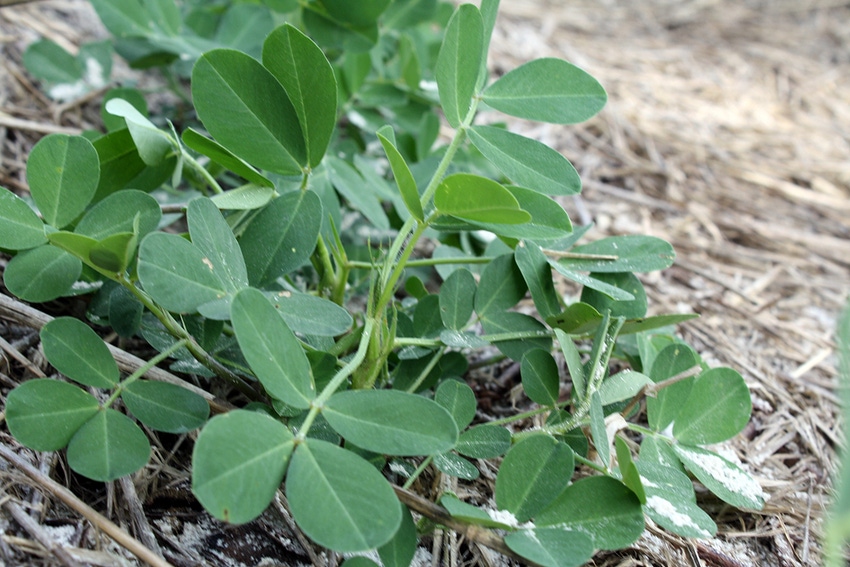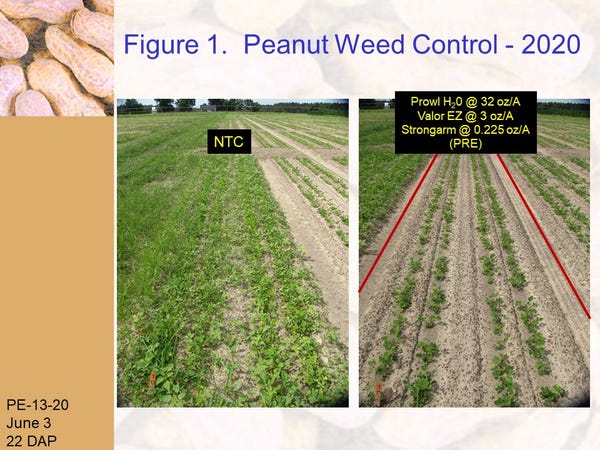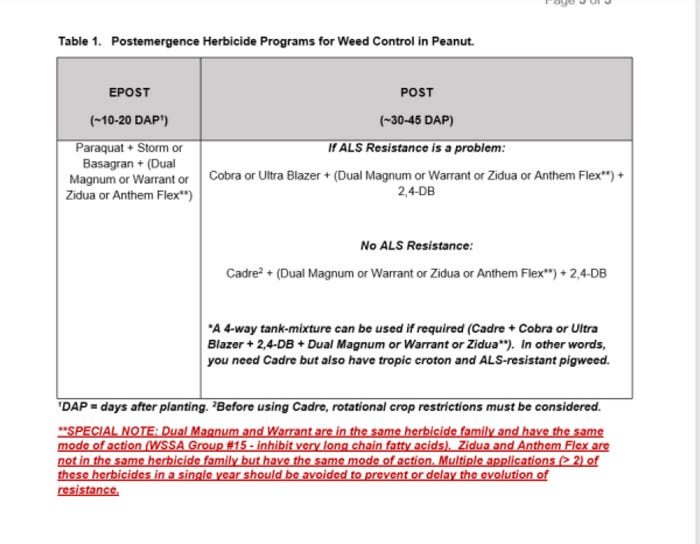June 16, 2020

This year marks my 20th cropping season as an Extension weed specialist at the University of Georgia. During that time, I do not think I have seen anything quite like this season. COVID-19, cooler temperatures, rainfall and lower peanut seed quality issues have made the 2020 production year very challenging for most. Consequently, it was almost impossible for me to sit down and write a coherent May article for Southeast Farm Press.
Since much or the entire peanut crop has been planted (or replanted) by now, growers will begin making postemergence, or POST, herbicide applications to supplement their preemergence, or PRE, programs. If you started clean and used a strong residual program at planting, I am hopeful that your peanut fields look like my research plots in Figure 1. Regardless of the outcome of your PRE program, you will need additional support from our POST weed control toolbox. I have listed my general EPOST, “cracking,” and POST recommendations for peanut weed control in Table 1.
Since there are quite a few products to choose from, I thought it might be a good idea for to provide you with some random thoughts about their use in POST peanut weed control programs. For additional information, I encourage you to contact your local county extension agent and/or check out the Peanut Weed Control Section of the 2020 UGA Pest Control Handbook.
Peanut POSTs
Anthem Flex (carfentrazone + pyroxasulfone), Dual Magnum (S-metolachlor), Outlook (dimethenamid-P), Warrant (acetochlor) and Zidua (pyroxasulfone): One of these Group 15 herbicides should be added to your POST program to improve the residual control of pigweed, tropical spiderwort/Benghal dayflower, and annual grasses.
Basagran (bentazon): Basagran is commonly tank-mixed with paraquat for use as a “safener” and to help improve the control of smallflower morningglory. Basagran will provide fair to good control of yellow nutsedge but only with sequential/split applications.
Butyrac/Butoxone (2,4-DB): Peanut plants are very tolerant of 2,4-DB and it is one of the only POST herbicides with some level of activity on sicklepod/coffeeweed. 2,4-DB is frequently added to other herbicides to slightly improve the control of certain species.
Cadre (imazapic): In the absence of ALS-resistant pigweed, Cadre will provided good to excellent control of most broadleaf weeds and yellow/purple nutsedge. Cadre is our best bet for the POST control of sicklepod when applied to small plants (3”). Cadre is a great bargain at the current price. It is not so tough on certain weeds such on common ragweed, tropic croton, eclipta, copperleaf, and spurge. Cadre frequently causes cotton rotation heartburn.
Gramoxone (paraquat): Paraquat should not be applied later than 28 days after peanut cracking. When tank-mixed with other herbicides, Gramoxone will provide good to excellent control of most of your common weeds including small annual grasses. Probably the best thing to use in your fields that are not regularly scouted or far away from the “big” house.
Storm (acifluorfen + bentazon): This pre-mix is frequently used in paraquat “cracking” sprays as a safener and to improve the control of tropic croton and morningglory. When applied alone, there is not enough acifluorfen in the mix to provide optimum control of larger pigweed plants (Storm @ 1.5 pt/A = 1 pt/A of Ultra Blazer + 1 pt/A of Basagran).
Strongarm (diclosulam): Although not listed in my general recommendations in Table 1, POST applications of Strongarm have been very helpful for the management of tropical spiderwort/Benghal dayflower. Strongarm is also very effective on a few other species such as annual morningglory, eclipta, common ragweed, common cocklebur, bristly starbur, and marestail/horseweed.
Ultra Blazer (acifluorfen) and Cobra (lactofen): Either of these herbicides are excellent choices in peanut fields with ALS-resistant pigweed populations. They also provide good control of annual morningglory, tropic croton, and hemp sesbania. Some growers do not like the cosmetic leaf burn that occurs when these herbicides are applied.
Always remember that the top enemies of POST weed control programs are dry weather and big weeds. The longer that POST herbicide applications are delayed, the less likely that they will provide the level of weed control that you are hoping for and need. The best way to kill a 12” tall pigweed is to spray it when it is only 3” tall! As always, good weed hunting!


About the Author(s)
You May Also Like






